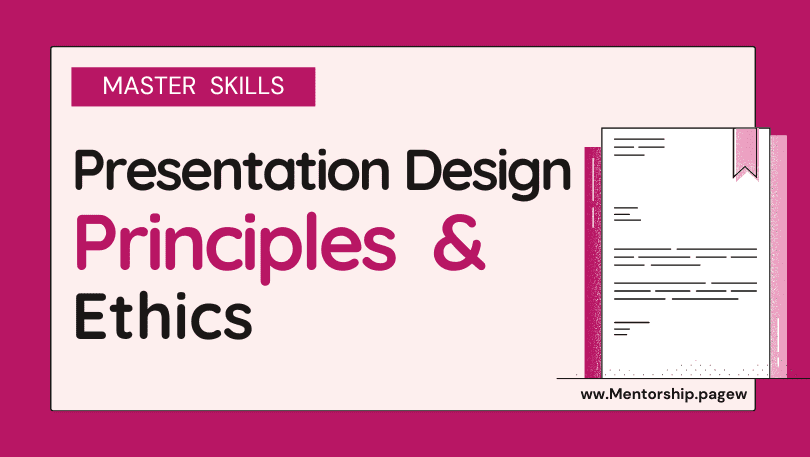There are many different types of presentation designs, each with its own strengths and weaknesses. Some of the most common types of presentation designs include:
- Informative presentations are designed to inform the audience about a particular topic. They typically use a lot of facts, figures, and statistics.
- Persuasive presentations are designed to convince the audience to take a particular action. They typically use emotional appeals and logical arguments.
- Entertaining presentations are designed to keep the audience engaged and entertained. They typically use humor, stories, and anecdotes.
The best type of presentation design for you will depend on the purpose of your presentation and the audience you are speaking to. For example, if you are giving a presentation to a group of experts on a technical topic, you might want to use an informative presentation design. If you are giving a presentation to a group of potential customers, you might want to use a persuasive presentation design. And if you are giving a presentation to a group of children, you might want to use an entertaining presentation design. There are a number of presentation design principles that can help you to create effective presentations. These principles include:
- Simplicity: The best presentations are simple and easy to understand. Avoid using too much text or jargon.
- Clarity: Your presentation should be clear and concise. Make sure your points are easy to follow and that your visuals are easy to see.
- Engagement: Your presentation should be engaging and interesting. Use visuals, stories, and humor to keep your audience’s attention.
- Credibility: Your presentation should be credible and trustworthy. Make sure your information is accurate and that you cite your sources.
- Relevance: Your presentation should be relevant to your audience. Tailor your content to their needs and interests.
- Call to action: Your presentation should have a call to action. Tell your audience what you want them to do after your presentation.
By following these principles, you can create effective presentations that will inform, persuade, and entertain your audience.
Guy Kawasaki’s Presentation Design Principles
Guy Kawasaki is a marketing expert and venture capitalist who is known for his simple and effective presentation style. Kawasaki’s presentation design principles include:
- The 10-20-30 Rule: This rule states that your presentation should be no longer than 10 slides, each of which should have no more than 20 words. This will help to keep your presentation focused and easy to follow.
- The Big Idea: Every presentation should have a big idea. This is the main point that you want your audience to remember. Make sure that your big idea is clear and concise.
- Stories and Humor: People are more likely to remember information if it is presented in a story or if it is humorous. Use stories and humor to engage your audience and to make your presentation more memorable.
- Practice, Practice, Practice: The more you practice your presentation, the more confident you will be when you give it. Make sure to practice in front of a mirror or with a friend or family member.
Other Presentation Design Principles
In addition to Guy Kawasaki’s principles, there are a number of other presentation design principles that can help you to create effective presentations. These principles include:
- Use visuals: Visuals can help to make your presentation more engaging and memorable. Use charts, graphs, images, and videos to illustrate your points.
- Vary your presentation style: Don’t just stand in front of the audience and read your slides. Use a variety of presentation styles, such as storytelling, humor, and Q&A, to keep your audience’s attention.
- Be yourself: Don’t try to be someone you’re not. Let your personality shine through in your presentation.
- Have fun: If you’re not having fun, your audience won’t be either. Relax, be yourself, and enjoy the presentation.
By following these principles, you can create effective presentations that will inform, persuade, and entertain your audience.
Ethics of Presentation Skills
There are a number of ethical considerations to keep in mind when giving a presentation. These include:
- Be honest and accurate. Make sure that the information you present is accurate and truthful.
- Give credit where credit is due. If you use someone else’s work in your presentation, be sure to give them credit.
- Respect your audience. Be mindful of your audience’s time and attention span.
- Avoid plagiarism. Do not use someone else’s work without their permission.
By following these ethical guidelines, you can ensure that your presentations are both informative and ethical and here are some additional tips for giving effective presentations:
- Know your audience. Tailor your presentation to the specific needs and interests of your audience.
- Practice, practice, practice. The more you practice, the more confident you will be when you give your presentation.
- Be enthusiastic. Show your audience that you are passionate about your topic.
- Make eye contact. This will help you to connect with your audience and keep their attention.
- Use gestures and facial expressions. This will help to engage your audience and make your presentation more interesting.
- Speak clearly and slowly. This will help your audience to understand you.
- Use visuals. Visuals can help to make your presentation more engaging and memorable.
- End with a call to action. Tell your audience what you want them to do after your presentation.
By following these tips, you can give effective presentations that will inform, persuade, and entertain your audience.



